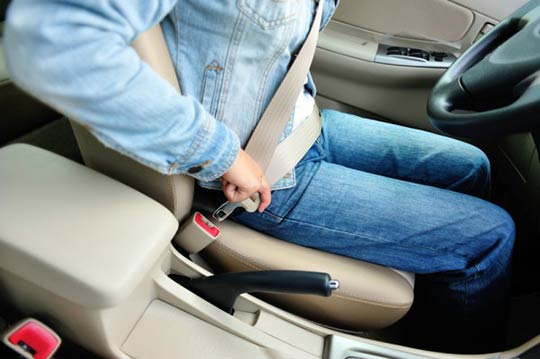
If you don't wear a seatbelt, you're twice as likely to die in a car accident. This one stat alone should ensure you buckle up on every car journey, but the sad fact is that not everyone does.
So if you know someone who doesn't always wear a seatbelt, the following stats and facts could save their life…
Shocking seatbelt statistics
- About 7% of road users don't wear seatbelts. If seatbelts halve the risk of death, this means not wearing one should account for about 15% of road deaths. In actual fact, over a third (34%) of car occupants killed in road crashes are not wearing a seatbelt.
- Wearing rates are higher on roads that have a speed limit over 40mph – and although the risk of death is greater at high speeds, this means a lot of people are putting themselves in danger on shorter, more familiar journeys.
- One-in-eight drivers in the UK are aged under 25, yet this age group accounts for a third of all people who die on the road.
- Drivers and passengers aged 17-34 are least likely to buckle-up. It's probably no coincidence then that road accidents are the single biggest killer of young people in the UK.
- Drivers caught not wearing a seatbelt face an on-the-spot fine of £100. If prosecuted, the maximum fine is £500.
- Wearing a seatbelt became a legal requirement in the UK in 1983 – a legislation change that has saved an estimated 50 million lives.
- About 14% of the population only occasionally wear seatbelts and wearing rates fall when it is dark, most likely because it is harder for police to enforce when visibility is low.
- Women are more likely to wear seatbelts than men.
A brief history of the seatbelt
1913 – The idea of wearing safety restraints first comes to prominence when the surviving pilot of a seaplane proposes all vehicle occupants should be restrained.
1930s – Physicians in the US start fitting seatbelts to their cars and urge car manufacturers to do the same.
1950s – Some vehicle manufacturers start fitting lap belts in their cars, while racing authorities begin to make seatbelts mandatory in race cars.
Volvo introduces the first three-point, lap and diagonal seat belts and some US states make two-point belts a legal requirement.
1960s – British law states front seat belts are mandatory on all new cars and the inertia reel seatbelt – a design still used in cars today – is developed.
1970s – Australia introduces a law to make seatbelt wearing compulsory, some European countries follow but the UK fails to make it law and fewer than half of all drivers wear seatbelts.
1980s – The UK finally makes seatbelt wearing a legal requirement for drivers and front passengers, and wearing rates jump from around 30% to almost 95% overnight. UK law states children must wear rear seatbelts.
1990s – A change to UK law means all adult passengers in the rear of the vehicle must now wear seatbelts.
The only fact you really need to know is this: seatbelts save lives. Be sure to buckle up next time you get in the car, and share this post with someone who needs to read it.

